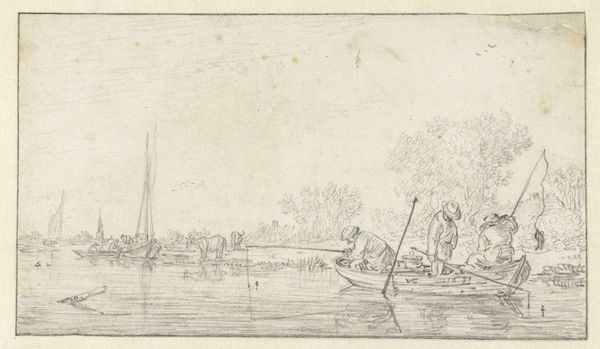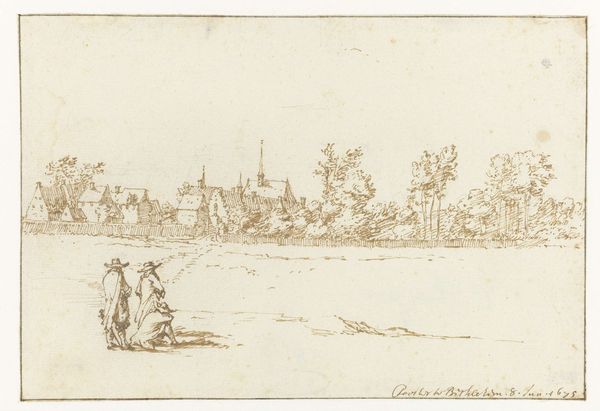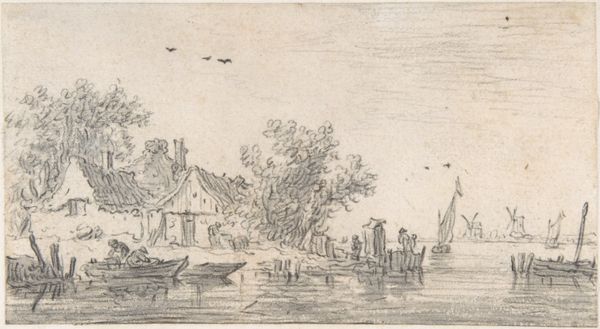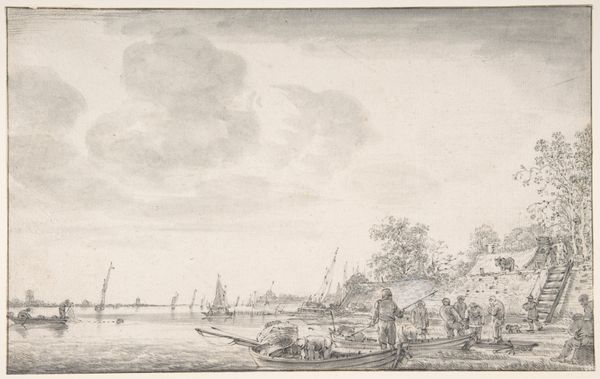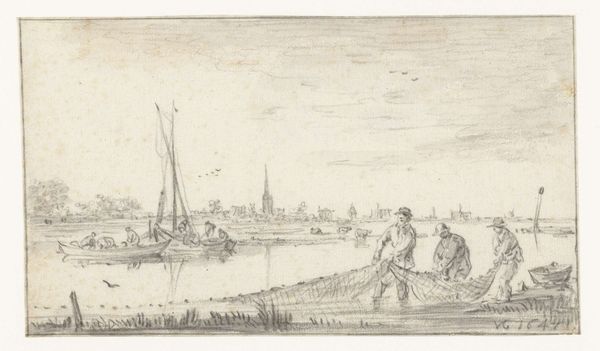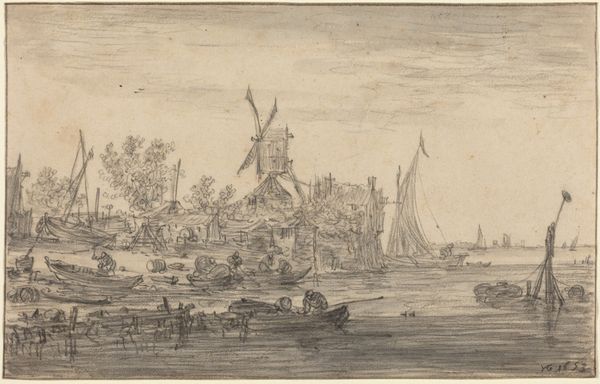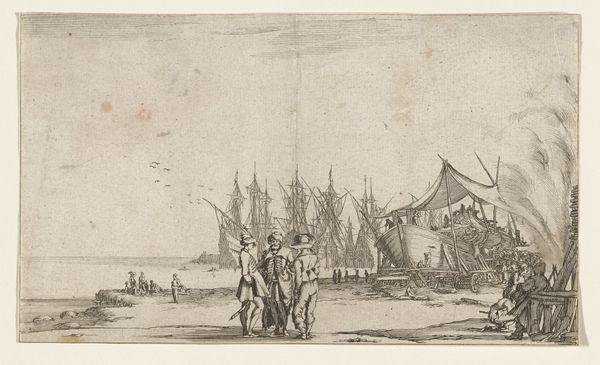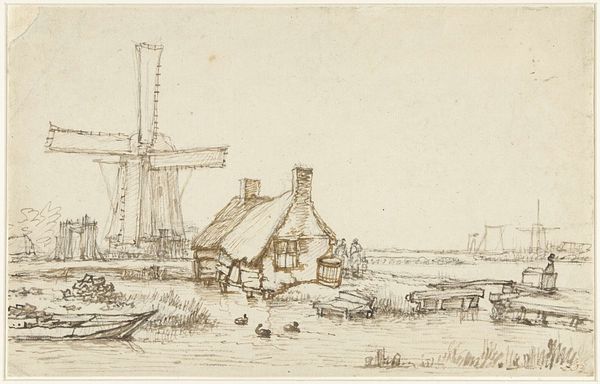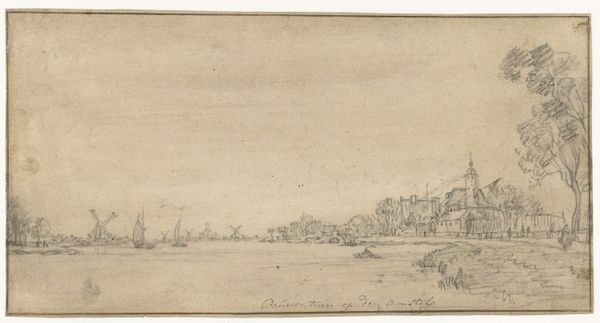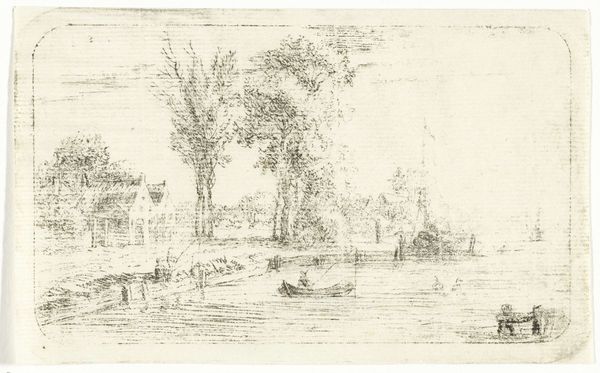
drawing, etching
#
drawing
#
baroque
#
dutch-golden-age
#
etching
#
landscape
#
figuration
Dimensions: height 93 mm, width 143 mm
Copyright: Rijks Museum: Open Domain
Editor: This is "The Omval," an etching made in 1645 by Rembrandt van Rijn. I’m struck by the quiet domesticity of the scene, even the windmills seem peaceful. How do you interpret this work within the context of Dutch Golden Age landscape art? Curator: It’s tempting to romanticize it, isn't it? The figures, the boats, the windmills, but that overlooks the powerful role these images played in solidifying a sense of Dutch identity. The etching circulated widely. Does this idyllic scene, for you, also touch on burgeoning merchant power reflected back onto the land? Editor: I hadn't thought about it that way. So, the very act of depicting the landscape… was a political act? A sort of ownership claim, maybe? Curator: Exactly! And consider the social strata implied here – the figures on the water likely represent prosperous merchants enjoying their leisure. Art was less about aristocracy during the Golden Age, but more about portraying power through new, civic-minded and, often, commercial iconography. Editor: I see! So, the ‘peaceful’ mood I initially felt may obscure a more assertive statement about Dutch prosperity and identity. It's almost like a visual branding exercise for the Dutch Republic. Curator: Precisely. Now, how does understanding this context affect your interpretation of Rembrandt’s choice of etching as the medium? How widely would such imagery have been disseminated and amongst which segments of society? Editor: That’s a good point! Etchings, as relatively accessible printmaking techniques, would spread the message of Dutch success to a much wider audience. So more than just wealthy landowners could take ownership of these images. I appreciate seeing that art and politics have always intertwined in such complex ways. Curator: Absolutely. Examining art within its socio-political framework allows us to see beyond face value and understand the deeper narratives that art carries, and the visual strategies for both inclusion and exclusion. It challenges what art is for, or whom it's really ‘for’.
Comments
No comments
Be the first to comment and join the conversation on the ultimate creative platform.
